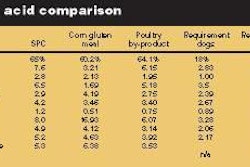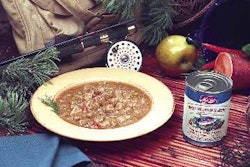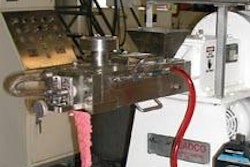Generally, the verdict from Europe must be that 2004 was an acceptable year for petfood sales. The mainstream dog and cat foods edged along steadily on volume. Value was lifted by the continued spending on premium products. Petfood manufacturers in various European countries have told me they were at least moderately satisfied with their latest annual results.
Product promotion
However, the lesson has been reinforced that it is far too early to contemplate dealing with the whole of Europe as if it were a single market. There were differences enough in the past, between the members of what used to be the EU-15 grouping on the western side of the continent. Now that the Center and East have entered the picture to create a European Union of 25 countries, it has become more important than ever to recognize that the marketing of petfood products must be country-specific rather than standardized for the whole trading block.
This is not simply due to the numbers of languages spoken, although that in itself is a major consideration. Europe's so-called EU-25 is a vast mixture of cultures and attitudes. Product promotion that works well in one member state of the EU may be doomed to fail in another place.
Relentless march east
Last year brought several temptations to think that this might no longer be the case. The new blanket of EU membership was one. Another, of even greater appeal to marketers, was the further advance of the international grocery chains in their relentless march from west to east. Auchan and Carrefour of France and Tesco of the UK were already well established in the central and Eastern parts of Europe. They have been joined more recently by competitors such as Aldi from Germany.
Before anyone thinks that this has meant a near-instant standardization of buying habits, however, take a look at the latest in a series of consumer surveys undertaken annually in Center and East Europe. Results published for the Shopping Monitor by market agencies GfK and Incoma Research cover the Czech and Slovak Republics, Poland and Hungary, as well as Romania, Serbia-Montenegro, Russia and the Ukraine. They reveal continuing differences from one country to another in the retail outlet type most preferred when making food purchases.
Of course, much depends on the proximity of the store to the home or place of work. But this research found Slovakians saying they preferred to shop in a supermarket, for example, whereas the people interviewed in Hungary and the Czech Republic favored the larger hypermarkets and those in Poland were divided between choosing hypermarket outlets, discount stores or small shops. Small-scale shopping also was popular among Romanians.
Supermarkets emerged nevertheless as the most favored store type across the full region. Internationally owned stores were reckoned the main shopping places in Poland, Hungary and the Czech republic, contrasting with the Slovakian situation where a local cooperative was judged to be the dominant player.
Research results
The last few months have also seen the publication of an Overseas Development Institute review by Belgian and American researchers, investigating implications of the rapid rise of supermarkets in Europe's Center and East zones. It reminds us that most purchases of foods until the end of the 1980s tended to be made at state-run stores. A transition period followed in the 1990s as retail sites were privatized. As recently as the middle of the last decade, however, large-format shops represented only about 5% of the retail sector in the region. By 2003, this had grown to 40-50% for countries considered in the first wave, and to 20-40% for those in the second wave. There are still some third-wave places with little more than 10% of their shopping floor in large format, but even they are growing fast.















